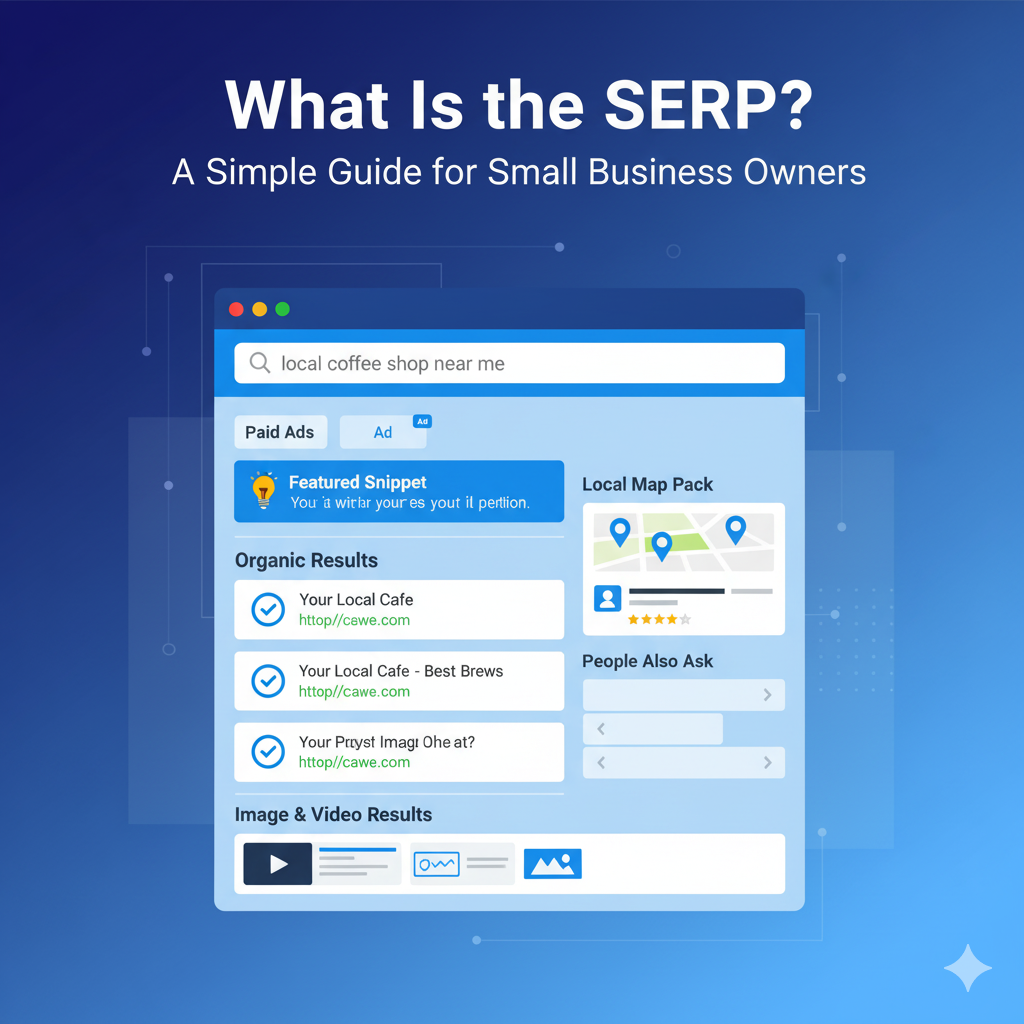- +91 9409789822
- webdigitalwaves@gmail.com
- Vadodara, Gujarat, India

SERP is where we normally search on Google.
We search any keyword like “best hospital near me” on Google, and according to the specific location, the business with good ratings or a fully SEO-optimized website will show in the 1st position.
The SERP isn’t just a list of blue links anymore it’s a digital battleground filled with ads, maps, videos, reviews, and featured snippets. Mastering how it works helps small businesses improve visibility, drive organic traffic, and build trust with potential customers. In this guide, we’ll break down what the SERP is, why it matters, and how you can use it to grow your business.
Understanding the SERP helps you identify where your business appears, what competitors are doing right, and how to improve your position to attract more leads.
Here’s a simple, actionable plan small business owners can follow to boost their visibility on Google’s SERP:
Use tools like Google Keyword Planner or Ubersuggest to find what your customers are searching for. Focus on long-tail keywords (e.g., “affordable digital marketing agency in Pune”) that reflect user intent.
A fully optimized website with more traffic will show in the search engine results.
You can also show social media accounts in the search engine if you have good content and more followers.
Write blogs, FAQs, and guides that answer common questions your audience has. Google rewards informative and well-structured content.
Fill out every section, add photos, and collect reviews. Keep business hours and contact details updated. This improves your chances of showing in the Map Pack.
Get listed on business directories, guest post on industry blogs, and collaborate with influencers. Backlinks signal trust to Google.
Use Google Search Console (GSC) to monitor which keywords you’re ranking for and what improvements you can make.
Following these steps consistently can move your website up the SERP rankings turning search visibility into real-world results.
Ranking higher on the SERP creates a ripple effect across your business. Here’s what you can expect when your SEO efforts pay off:
More Website Traffic: Higher rankings mean more clicks and visitors.
Increased Leads & Sales: Targeted visibility converts into paying customers.
Stronger Brand Credibility: Appearing in top search results signals authority.
Cost-Effective Marketing: Organic SEO traffic costs less than continuous paid ads.
Competitive Advantage: Outranking competitors ensures your business stays top of mind.
In short, a well-optimized presence on the SERP isn’t just about rankings — it’s about creating consistent, sustainable growth for your business.
Small business owners should first create a Google My Business profile,
get good ratings from customers on that profile,
and also have a fully SEO-optimized website
so that the owner’s business can grow easily.
In today’s digital age, knowing what the SERP is and how it works is no longer optional — it’s essential. For small business owners, the SERP is your digital storefront, where customers discover, trust, and choose you over competitors.
Start today: audit your website, optimize your Google Business Profile, and track your rankings. The SERP isn’t just where searches end — it’s where your business growth begins.